
One thing that has been a very big topic of discussion during home inspections with many clients is the topic of mold. If you’ve ever experienced any sort of mold symptoms from a serious exposure, you can probably relate to the concern that many new homeowners have.
Mold is likely in most houses, however there are many different types of mold that can be present. And because mold is a living organism, it poses more of a risk than some other environmental toxins. Mold is also something that can affect each ohme and each person very differently. One person’s mold symptoms may be completely different from another’s symptoms because of both the type of mold and each individual’s natural response to mold exposure.
This is why it’s such a confusing part of home toxins and why it can feel so scary when you’re experiencing it. I have spoken with so many families who have experienced mold exposure in their own homes and for some of them the healing process is long and a constant battle.
When Hope contacted me about her home and the experience they had with mold in their house and how it affected their family, I agreed that her story could benefit others and help with many aspects of the entire process.

HOPE’S STORY
My interview with Hope is here to help others walk through any part of the mold process — from first mold symptoms, to diagnosis and finally remediation and healing.
Hope and her family of seven moved into their home in 2018, only to become consistently sick as their bodies fought inflammation constantly. In her video, she shares how they just couldn’t get over respiratory illnesses and she suffered so much pain and inflammation.
It wasn’t until 2020, when they had exhausted all options, that they tested their home for mold. Now on the journey to remediating their home, they see a light at the end of the tunnel and are excited to begin healing their bodies after their home is free from mold.
You can watch her story below:
MOLD SYMPTOMS FROM EXPOSURE
Hope’s family had all sorts of mold symptoms that ranged from respiratory illness to ADHD diagnoses, and more. Each and every one of the symptoms that they experienced was tied to inflammation in their bodies that wasn’t allowing them to naturally resist illnesses.
I think it’s important to note that everybody is completely unique in its response to mold exposure, and so mold symptoms can range greatly in each person and individual.
Some information about mold and inflammation can be found at these sources, which will walk you through more mold symptoms:
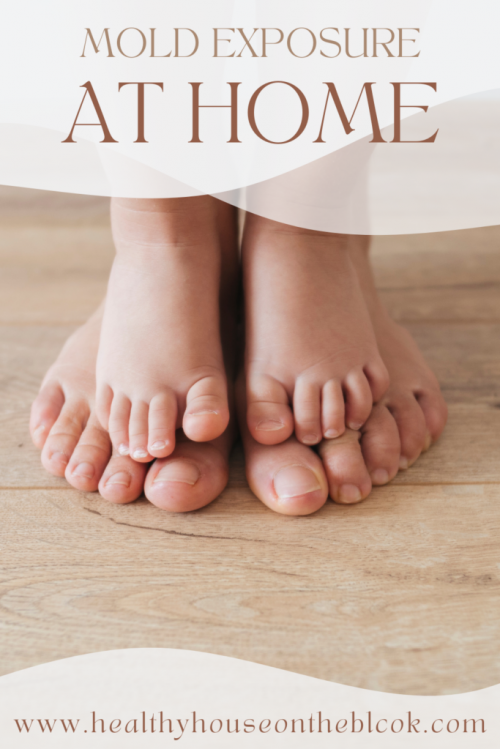
DIAGNOSING MOLD IN YOUR BODY AND HOME
In the case of Hope’s family, she was able to work with a functional medicine doctor, who guided them to getting themselves test for mold. Functional medicine doctors are an excellent resource in terms of healing as they look at the body and the environment the body is in as a unique system, not individual parts. This can be so beneficial for mold symptoms as they are often present in many areas of the body, presenting as different issues.
Most often someone would have themselves tested for mold or diagnosed with some mold exposure through a series of testing done with a functional medicine doctor. From this point, the next step would be having a professional tester come out to test your home for mold.
And then make sure you’re airing out your home in between the time of testing and getting the mold actually removed.
Test your own home with my guidance using the EMMA (Environmental Mold & Mycotoxin Assessment), which uses sensitive molecular detection to look for the presence of the most toxic molds and most poisonous mycotoxins
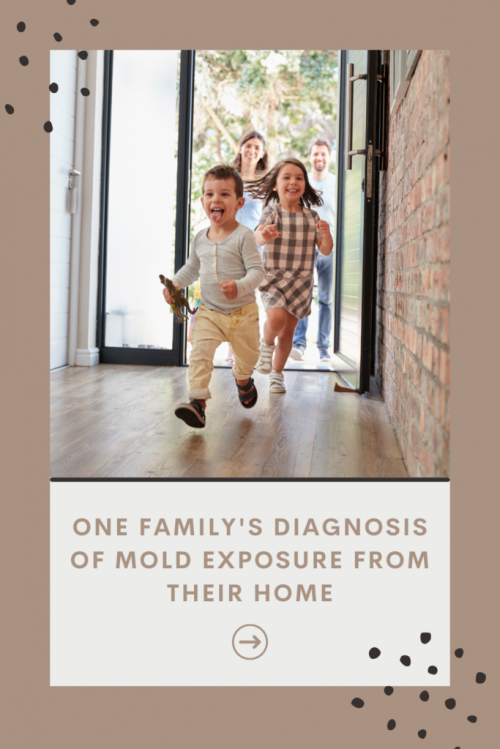
REMEDIATING YOUR HOME
All homes are different across our states and across the country. Not every home has mold that is easily removed and remediated. This is why I think it’s so important to work with a professional. Many companies will create a negative pressure in the home to ensure that mold spores aren’t traveling anywhere else in the home while work is being completed.
It’s also important to create a logical plan to remove the mold. First and foremost, I think it’s important to find the source and remove the source before remediating. The source of all mold is a form of moisture or water intrusion. It could be from condensation, plumbing leaks or leaks from the outdoors. Once you find where this moisture is coming from and fix the way moisture is getting into your space, you ensure that the mold won’t return.
A company that specializes in removing mold will make sure that the space is not only sealed off, but also cleaned thoroughly. Mold thrives on porous surfaces, and often these materials need to be completely removed from the home in order to completely remove mold.
I always recommend a final test to ensure that there is no mold in the space. Make sure you get this final test done by a third party to protect yourself and your family. Afterwards, it doesn’t hurt to monitor for mold or test for mold on a frequent basis.
As Hope mentions in her interview, there are programs through counties and states that can assist you with a grant to remediate your home for mold and other toxins, if your home is affected. This can SUCH a valuable resource for families who may not have the means to fix their home immediately, but need to be relieved of the mold symptoms.
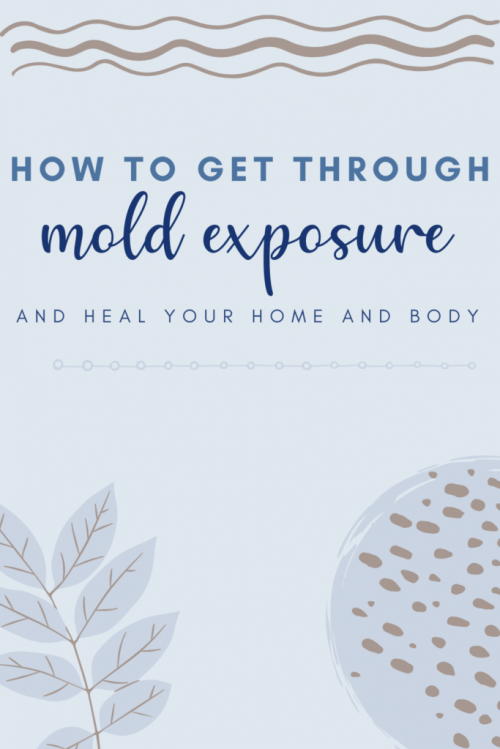
HEALING YOUR BODY FROM MOLD
I won’t even pretend to be the most knowledgeable about healing a body from mold. This is why I think functional medicine doctors are SUCH a benefit in this type of toxin exposure. Not only can they help heal bodies, but they can also help rebuild bodies to be resilient to future exposures that may happen.
The most important thing to remember is that in order to heal your body, you must be out of the mold environment. As Hope mentioned, this isn’t always possible, and so in the meantime, they’re doing everything they can to get fresh air inside their home while they wait for remediation work to start.
Airing out your house and bringing in fresh air to dilute indoor toxins is one of my biggest recommendations when it comes to creating a healthy home.
First, open windows on a regular basis. Run fans and try to keep indoor humidity levels between 30% – 40%.
Getting rid of as much dust as possible will also help reduce mold spores that are in your home.
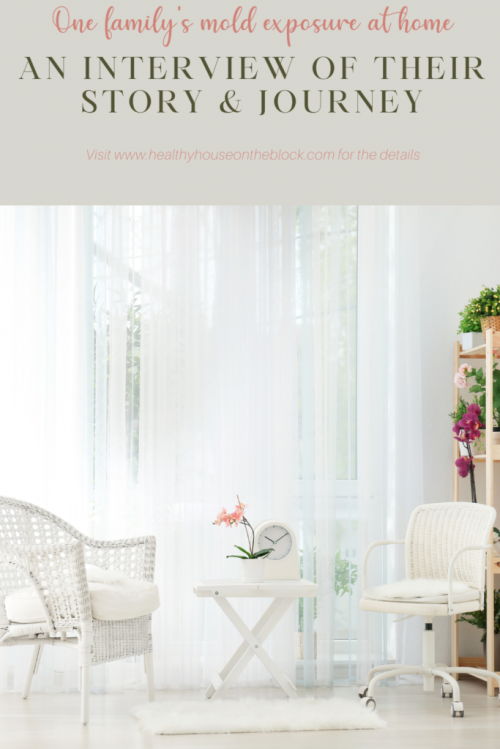
CHECKING YOUR HOME BEFORE YOU MOVE IN
Test your own home with my guidance using the EMMA (Environmental Mold & Mycotoxin Assessment), which uses sensitive molecular detection to look for the presence of the most toxic molds and most poisonous mycotoxins
As a home inspector, one of my biggest takeaways from Hope’s story about their mold and the mold symptoms they experienced is the need for having your home inspected thoroughly. Many home inspectors will simply do a visual inspection for mold. In Hope’s case, this wasn’t enough as the mold was behind walls and in insulation. It’s important to ask inspectors ahead of time how they check for mold.
Some Inspectors can do a full air test, others will check with a thermal imaging camera or a moisture meter. These are all different avenues to check for mold in a home on top of the visual inspection.
In the same breath, I think it’s important to remember that a home inspection is non-invasive, meaning walls can’t be disturbed, and often an inspector is only in the home for a few hours. Many problems and issues won’t be known until someone has lived in a home for much longer than this.
Be diligent before you move in and make sure to hire an inspector who will take the time to talk to you and inspect your home for signs of mold.


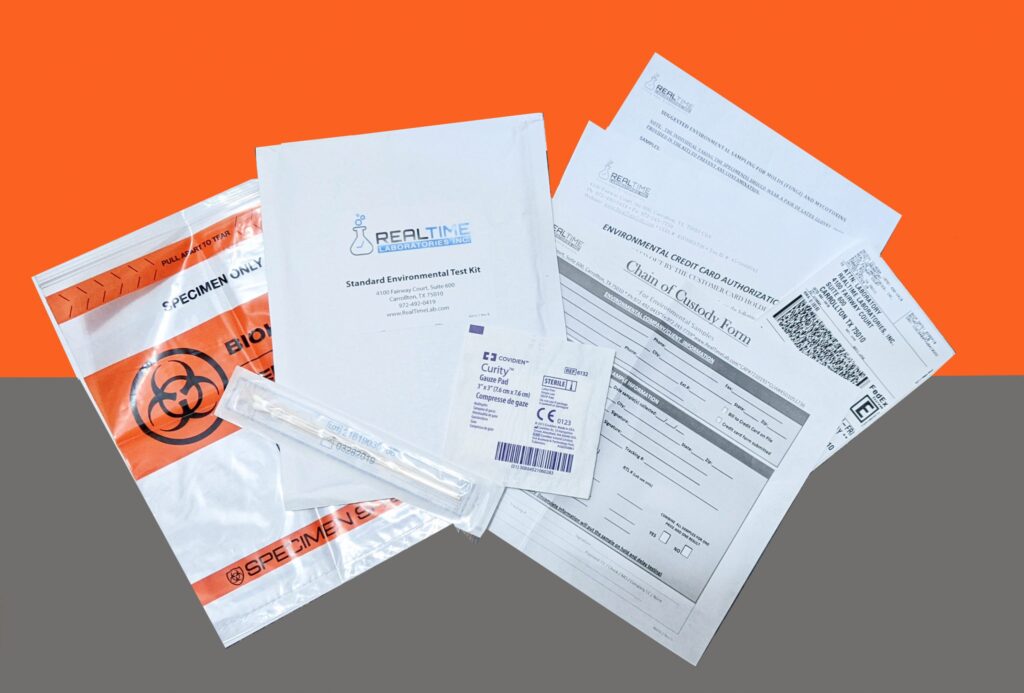



Pingback: How to Fix a Damp House » Healthy House on the Block